Related Articles
Any potential US airstrike would target not only Iran's nuclear facilities but also its air defense and missile capabilities in a bid to prevent possible retaliation, the former commander of US Central Command told Iran International.
In an exclusive interview with Iran International, former CENTCOM commander and CIA chief David Petraeus said Donald Trump would not stop at a limited attack on Iran's nuclear sites and would go after the Islamic Republic's air defense and missile capabilities.
"You probably have to take out some of the retaliatory capacity of Iran as well because you don't want to just take out the nuclear program and then have them go after the bases where we have forces, and that would then bring in all these other countries, of course," he said.
"This is not just a surgical attack on discrete nuclear capabilities. This is against the retaliatory capabilities, against the defense capability, and that's what has to be done if you're going to carry out this operation."


Any potential US airstrike would target not only Iran's nuclear facilities but also its air defense and missile capabilities in a bid to prevent possible retaliation, the former commander of US Central Command told Iran International.
The US military has in recent days deployed long-range bombers at a strategic Indian Ocean airbase amid escalation of tensions with Tehran, a move which presaged major bombing campaigns against Afghanistan in 2001 and Iraq in 2003.
In an exclusive interview with Iran International, former CENTCOM commander and CIA chief David Petraeus described the deployment as a step toward preparing for military action against Iran if it failed to reach a deal with the Trump administration over its disputed nuclear program.
"They are also steps to show that we are very serious and that you should not do this, and therefore trying to deter Iran from doing what would be unacceptable and would force the United States to take action," he said.
Petraeus said, "There's great concern about how close Iran is to the possibility of having a nuclear weapon. They're literally just one turn of the enrichment process from having weapons-grade uranium. That is something that President Trump has said he will never allow the Iranians to have a nuclear weapon."
Trump has warned Iran would be bombed if it did not agree to a new nuclear deal, prompting Iran's Supreme Leader Ali Khamenei to say on Monday that the Islamic Republic would deal a "strong blow" in retaliation for any attack.
Iran's retaliation
Iran has threatened to target American interests in the region, including its strategic Diego Garcia naval base in the Indian Ocean if it is attacked by the US.
However, Petraeus says Trump would not stop at a limited attack on the nuclear sites and would go after the Islamic Republic's air defense and missile capabilities.
"You probably have to take out some of the retaliatory capacity of Iran as well because you don't want to just take out the nuclear program and then have them go after the bases where we have forces, and that would then bring in all these other countries, of course," he said.

"This is not just a surgical attack on discrete nuclear capabilities. This is against the retaliatory capabilities, against the defense capability, and that's what has to be done if you're going to carry out this operation."
Plan to destroy Iran's nuclear program
Petraeus said he actually developed the plan to destroy Iran's nuclear program over 15 years ago when he was the commander of the US Central Command.
"It's publicly known that we actually rehearsed that plan one time inside the United States, with all the planes flying all the distances that they would have to fly, the refuelers, all the command and control, the jammers that drop, the munitions that we would drop, and so forth. And it all worked."
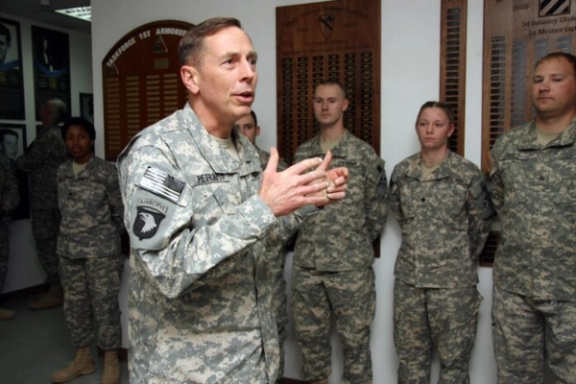
"We were prepared one time actually, to set the theater, in other words, to identify all the locations from which the planes would fly, where they would be based. The munitions were in place, the food, fuel, water, etc. All was set. We thought there was a likelihood of this. We told the White House we probably should get more prepared than we were."
'Israel proved it's possible'
Petraeus said Iran currently "does have more effective, more elaborate air and ballistic missile defenses" than in the past. However, he said, "Israel penetrated them twice, showing that that can be done."
Last October, Israeli air strikes against Iran's military sites knocked out the country's last three Russian-provided S-300 air defense missile systems, leaving the country "naked", Fox News reported citing US and Israeli officials.
The surface-to-air S-300s were the last in the Islamic Republic's arsenal after one was destroyed in an attack in April 2024 also likely carried out by Israel, Fox News quoted a senior US official as saying.
Still, Petraeus says Iran has "more retaliatory capability in terms of missiles and so forth, even though Israel dramatically reduced the ability of Iran to make solid fuel rocket engines from several per day to one or two per week."
Bunker busters
The former CENTCOM commander said the US military has bombs like the 30,000-pound GBU-57, aka Massive Ordnance Penetrator (MOP), that "is very accurate and can penetrate very hardened targets".
"It would be used against the most deeply buried hardened targets... you can imagine which target that might be," he said, adding that the use of such bunker busters is "not just possible but would be necessary" in a potential strike against Iran.
Iran’s most secretive nuclear facility, known as Fordow, has been carved deep into a mountain in central Iran, and is reportedly some 90 meters (295 feet) deep. It is also protected by several feet of reinforced concrete.
In 2012, defense experts contacted by Reuters believed the chances of a US strike against Fordow succeeding are slim. However, Petraeus says, "they can do enormous damage and destruction".
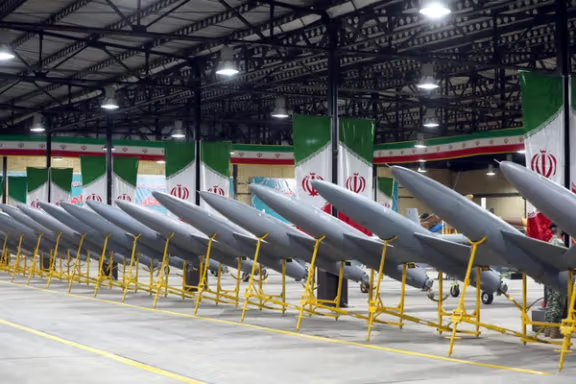
An Iranian cargo aircraft belonging to Iran's Revolutionary Guards transported weapons to Sudan's armed forces last month amid that country's ongoing civil war, two informed sources told Iran International.
A European intelligence source said the Boeing 747 with registration EP-FAB operated by Fars Air Qeshm, an airline owned by the powerful military organization, departed Tehran and landed in Port Sudan under flight number W5998 on March 17.
A second source with knowledge of the activities of the Islamic Revolutionary Guard Corps (IRGC) confirmed the shipment contained military equipment, including various types of drones.
The source added that the cargo was delivered to the Sudanese army.
A transnational paramilitary force, the IRGC spearheads Tehran's influence in the Middle East, including training and arming affiliates including Hamas, Hezbollah, the Houthis and Iraqi militias.
Iran previously used this same aircraft—bearing the same registration number—to fly a similar shipment from Bandar Abbas to Sudan in June/July 2024.
In recent months, multiple open-source investigations have pointed to an increased Iranian military role in Sudan. Satellite imagery published by BBC World Service showed Iranian drones stationed at a military site near Khartoum.
The BBC reported that Tehran had sent Ababil-3 and Mohajer-6 drones, models known for reconnaissance and strike capabilities. Iran has also supplied these drones to armed groups in Iraq, Venezuela, and Russia.
Images have emerged on social media that appear to show Iran-made anian-oduced eh-2 anti-armor missile Saeqeh-2 army positions.
The Sudanese military has been engaged in a two-year-long war against the Rapid Support Forces, a paramilitary group.
Iran’s ties with Sudan have fluctuated in recent years. In 2016 following the storming of Saudi diplomatic sites in Iran by protesters, Sudan severed diplomatic relations with Tehran along with other Saudi allies including the United Arab Emirates.
However, the two countries resumed ties in late 2023, amid the war between Israel and Hamas. In December, Sudan’s foreign minister visited Tehran, and the two governments announced the re-establishment of formal relations.
In February, Sudanese Foreign Minister Ali Youssef returned to Iran for further talks.
Last year, the Wall Street Journal reported that Iran had proposed an agreement to Sudan offering a warship in exchange for a permanent base. According to the report, the Sudanese government rejected the offer.
Even so, arms deliveries from Tehran appear to have continued. Bloomberg reported in December that Iran is backing the Sudanese army forces with weapons and drones as Tehran and its ally, Moscow, seek military bases in the Red Sea.
The report said Iran has delivered arms to Sudanese army forces and provided them with dozens of drones, helping tip the conflict against militia opponents but also giving Tehran a foothold in the region.
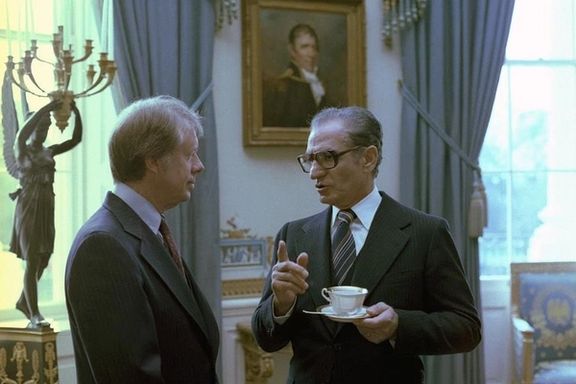
Nearly fifty years later, Iran International can reveal the untold story of a critical US mission to Tehran ordered by President Jimmy Carter to determine whether Mohammad Reza Pahlavi Shah could fend off a revolution.
Their conclusion, after facing militants' bullets and a ghostly encounter with the shell-shocked monarch, was that the US could no longer support its longtime ally's rule.
The consequences of Islamic Revolution to follow reverberate to the present day.
Ambassador John Craig, 80, was a young American diplomat when he was tasked with joining an exclusive group to meet the Shah alongside Senate majority leader Senator Robert Byrd.
It was a mission that went undisclosed even to American Ambassador to Iran William Sullivan, Craig told Iran International in an interview in Elizabethtown, Pennsylvania, where he teaches at the local university.
In a storied career, Craig went on to serve as US ambassador to Egypt and Oman.
“President Carter asked Senator Byrd to make a special trip to Tehran to give him a personal assessment of the longevity of the Shah. There was great concern in Washington”, said Craig, “Could the Shah hold on? Could the Shah defeat the revolution?”
Their task was to help Carter transcend the disagreements within the US foreign policy over whether one of Washington's key allies in the turbulent region could be salvaged and provide an unvarnished take on the Shah's mettle.
“Some were saying, yes, the Shah could hold on, others no. One of the issues in that debate was how much force should be used to put down the revolution,” said Craig.
"There were those who felt that the Shah should really be aggressive and shoot people. And there were those who felt that reforms were the way to defeat the revolution.”

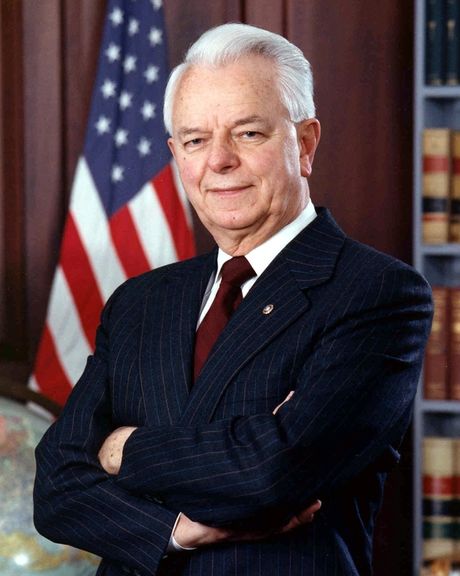
Mission: Tehran
To camouflage the trip's true purpose, Craig and the rest of the group made a diplomatic tour across the Middle East and the North Africa before arriving in Tehran.
Craig touched down in December 1978, just a few months before the Shah was ultimately toppled and as rebellion roiled cities nationwide.
Violence was escalating and martial law was in place as armed anti-Shah demonstrators roamed the streets chanting ‘death to the Shah!’
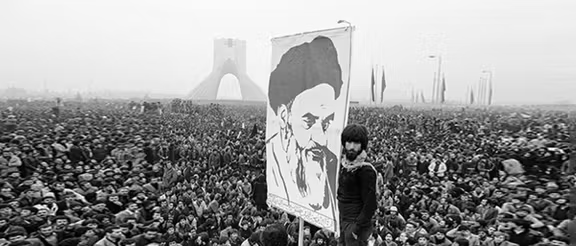
Because of the security risk, Craig and the team were not able to drive to the Shah’s Niavaran palace and instead flew by helicopter.
“We were flying. You could see out the windows that people were shooting at us,” Craig said.
When they arrived, Craig said he was astonished to see bare walls - no paintings, no antiques - in what was once among the world's most opulent palaces.
It became clear that the Shah was preparing to flee.

“I'm saying to myself, this is really weird. I said to myself immediately, these guys have packed up. They are ready to go. No question about that,” Craig said.
Entering the palace’s Hall of Mirrors, Craig caught sight of the Shah and his wife, Empress Farah Diba, standing to greet them.
'Inert' emperor
“He was comatose. Standing, but inert,” said Craig.
“I noticed that the Shah was looking straight ahead. He was not interacting. His eyes weren't moving. He did not raise his hand. But when the person put their hand in his hand, he didn't grasp it and he didn't shake it,” Craig said.
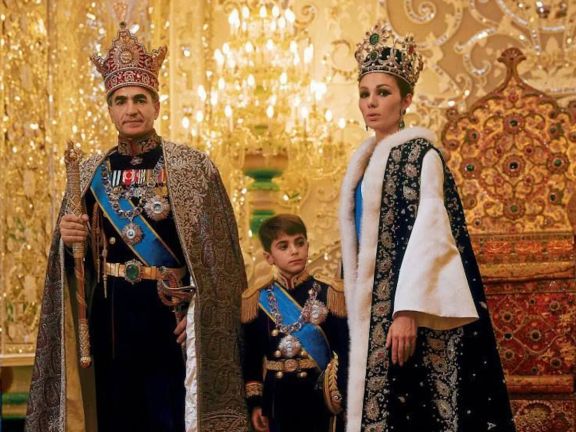
They went on to have lunch in the palace. Craig said the Shah did not speak once over the course of the meal, leaving the Empress to do all the talking. She appeared to be in control and running the country in the last days of their rule, Craig concluded.
“He didn't eat. He didn't move. He didn't say a word,” said Craig about the Shah.
Pleasantries and small talk dominated the discussion and the violence in the streets went unmentioned. Senator Byrd and Ambassador Craig left convinced that the Shah was unfit to rule.
Little did anyone at the time realize it, but the lunch was to help determine US policy and Iran's future course for the coming decades.
Screaming match
What followed next was a visit by Senator Byrd and Ambassador Craig to Ambassador Sullivan’s house in Tehran to break the news on the special visit.
While Ambassador Craig did not partake in the conversation, he could hear what Sullivan and Byrd were saying.
“There was a lot of screaming and yelling. They were arguing about what our policy should be going forward,” said Craig on the encounter between the two men.

The conversation lasted about three hours, with Sullivan coming to the defense of the Shah and pushing to have the Americans keep him in power. Byrd argued the Shah was already done for and unable to rule over a people in revolt.
On the flight back to the United States, Senator Byrd prepared his report to Carter.
“We were such a small group, of course, that we could hear what the senator was dictating in the memo to the president. So we we all knew what the senator was saying in his memo,” said Craig.
Once they arrived back to D.C, the Senator had a car waiting to take him straight to the White House, where he informed the president of his dire conclusion: the scion of Iran's 2,500-year monarchy was doomed.
“He went back and told the president: This is not going to work," Craig said.
"The Shah cannot continue.”
You can watch the full interview with Ambassador John Craig on YouTube.
The administration of US President Donald Trump remains committed to preventing Iran from acquiring a nuclear weapon and is still pressing for direct talks with Tehran, a National Security Council spokesman told Iran International.
Asked whether the administration sees any path forward for indirect engagement or dialogue given current tensions, the spokesman said: "President Trump and his administration remain committed that the Iranian regime never obtain a nuclear weapon, and we continue to press for direct talks."
